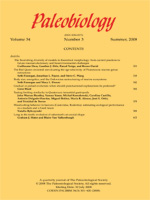Long bones (femora, humeri) are the most abundant remains of sauropod dinosaurs. Their length is a good proxy for body length and body mass, and their histology is informative about ontogenetic age. Here we provide a comparative assessment of histologic changes in growth series of several sauropod taxa, including diplodocids (Apatosaurus, Diplodocus, indeterminate Diplodocinae from the Tendaguru Beds and from the Morrison Formation), basal macronarians (Camarasaurus, Brachiosaurus, Europasaurus), and titanosaurs (Phuwiangosaurus, Ampelosaurus). A total of 167 long bones, mainly humeri and femora, and 18 limb girdle bones were sampled. Sampling was performed by core drilling at prescribed locations at midshaft, and 13 histologic ontogenetic stages (HOS stages) were recognized. Because growth of all sauropod long bones is quite uniform, with laminar fibrolamellar bone being the dominant tissue, HOS stages could be recognized across taxa, although with minor differences. Histologic ontogenetic stages generally correlate closely with body size and thus provide a means to resolve important issue like the ontogenetic status of questionable specimens. We hypothesize that sexual maturity was attained at HOS-8, well before maximum size was attained, but we did not find sexually differentiated growth trajectories subsequent to HOS-8. On the basis of HOS stages, we detected two morphotypes in the Camarasaurus sample, a small one (type 1) and a larger one (type 2), presumably representing different species or sexual dimorphism.
How to translate text using browser tools
1 March 2008
Ontogenetic stages in the long bone histology of sauropod dinosaurs
Nicole Klein,
Martin Sander
ACCESS THE FULL ARTICLE

Paleobiology
Vol. 34 • No. 2
March 2008
Vol. 34 • No. 2
March 2008




